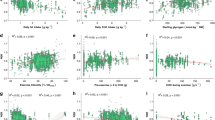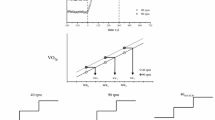Abstract
Due to current technical difficulties and changing cellular conditions, the measurement of anaerobic and recovery energy expenditure remains elusive. During rest and low-intensity steady-state exercise, indirect calorimetric measurements successfully represent energy expenditure. The same steady-state O2 uptake methods are often used to describe the O2 deficit and excess post-oxygen consumption (EPOC): 1 l O2 = 5 kcal = 20.9 kJ. However, an O2 deficit plus exercise O2 uptake measurement ignores energy expenditure during recovery, and an exercise O2 uptake plus EPOC measurement misrepresents anaerobic energy expenditure. An alternative solution has not yet been proposed. Anaerobic glycolysis and mitochondrial respiration are construed here as a symbiotic union of metabolic pathways, each contributing independently to energy expenditure and heat production. Care must be taken when using O2 uptake alone to quantify energy expenditure because various high-intensity exercise models reveal that O2 uptake can lag behind estimated energy demands or exceed them. The independent bioenergetics behind anaerobic glycolysis and mitochondrial respiration can acknowledge these discrepancies. Anaerobic glycolysis is an additive component to an exercise O2 uptake measurement. Moreover, it is the assumptions behind steady-state O2 uptake that do not permit proper interpretation of energy expenditure during EPOC; 1 l O2≠ 20.9 kJ. Using both the O2 deficit and a modified EPOC for interpretation, rather than one or the other, leads to a better method of quantifying energy expenditure for higher intensity exercise and recovery.
Similar content being viewed by others
Author information
Authors and Affiliations
Additional information
Accepted: 23 September 1997
Rights and permissions
About this article
Cite this article
Scott, C. Re-interpreting anaerobic metabolism: an argument for the application of both anaerobic glycolysis and excess post-exercise oxygen consumption (EPOC) as independent sources of energy expenditure. Eur J Appl Physiol 77, 200–205 (1998). https://doi.org/10.1007/s004210050322
Issue Date:
DOI: https://doi.org/10.1007/s004210050322




